Business people need to understand the basic knowledge of containers
Definition of containers:
A container is a standardized large metal container used for long-distance transportation of goods, typically transported by sea, rail, or road. The design of the container allows for easy movement between different modes of transportation.
Hong Kong refers to it as a "cargo box". Taiwan calls it a "container". The definition of containers varies among different countries, regions, and organizations internationally.
The International Organization for Standardization (ISO) defines containers as follows:Containers are a type of transportation equipment; Has sufficient strength and can be used repeatedly for a long time; Specially designed for the convenience of product transportation, there is no need to change packaging midway during transportation under one or more modes of transportation; Equipped with fast loading and unloading and handling devices, especially when transferring from one mode of transportation to another; When designing, attention should be paid to facilitating the filling or unloading of goods; The content volume is 1 cubic meter or more.The meaning of the term container does not include the general packaging of vehicles.
Type of container:
Dry cargo container: This is the most common type used for transporting general goods such as electronic products, textiles, and machinery.
Reefers: These containers have an insulation layer and refrigeration device, used for transporting temperature sensitive goods such as food and medicine.
Open top containers: These containers have a detachable top for easy loading of oversized cargo.
Flat containers: These containers have foldable sides and are used for transporting heavy or oversized goods.
Tank containers: These containers are designed for transporting liquids such as chemicals, fuels, and food grade products.
Ventilation containers: These containers have ventilation holes for transporting goods that require ventilation.
Special containers: These include other specialized types such as automobile transport vehicles, clothing boxes, etc., suitable for specific cargo needs.
Container size:
The standard container length is 20 feet (6.1 meters) or 40 feet (12.2 meters).
High container containers are similar in length, but they are higher and can provide more vertical space.
Other sizes include 45 feet (13.7 meters), 48 feet (14.6 meters), and 53 feet (16.2 meters), but these sizes are less common.
Markings on container doors
The markings on container doors are crucial for identifying and tracking the movement of containers in the global supply chain. They help ensure that containers are safely and efficiently loaded, transported, and unloaded.
See the example below:
Owner's Code:
A three letter code representing the owner of the container. This code is registered with the International Bureau of Containers (BIC) and is unique to each owner.

Container type identification code:
The fourth letter of the main code of the container is used to indicate the type of container, where "U" represents a regular cargo box, as well as "J" for detachable boxes and "Z" for trailer boxes.
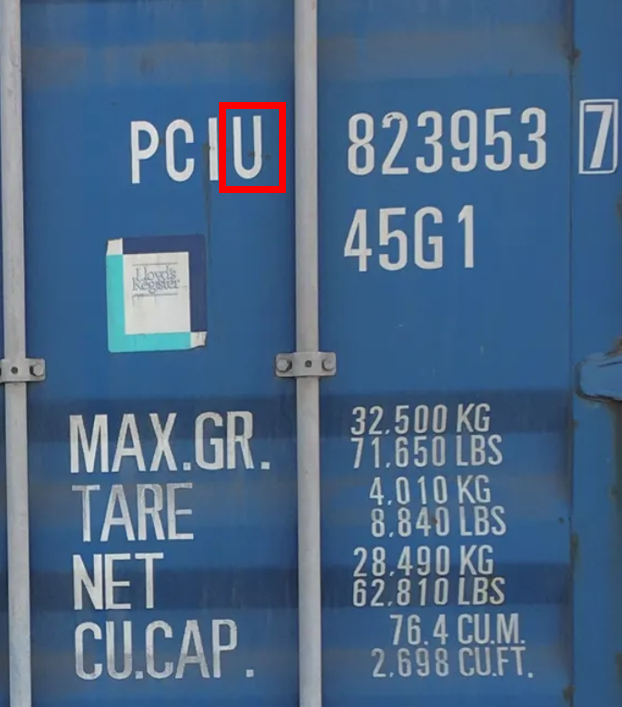
Size and Type Code:
There are 4 digits in total, the first digit represents the length of the box, the second digit represents the height of the box, and the last two digits represent the type of box.

According to ISO 6346-1995, it is defined as follows:
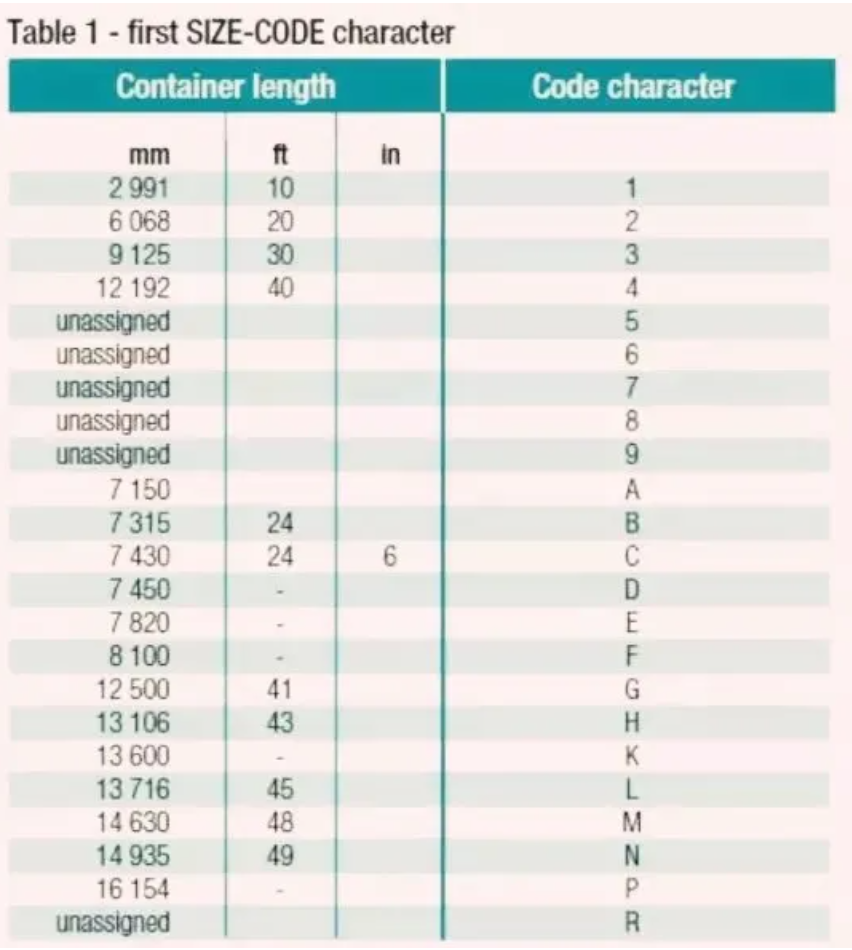
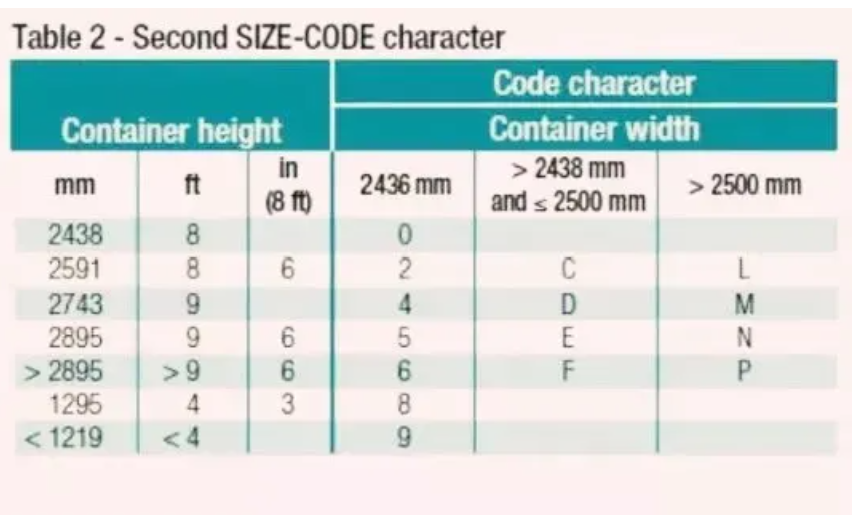
Serial Number:
A seven digit number that uniquely identifies the container.

Check Digit:
A single number used to verify the accuracy of container serial numbers.
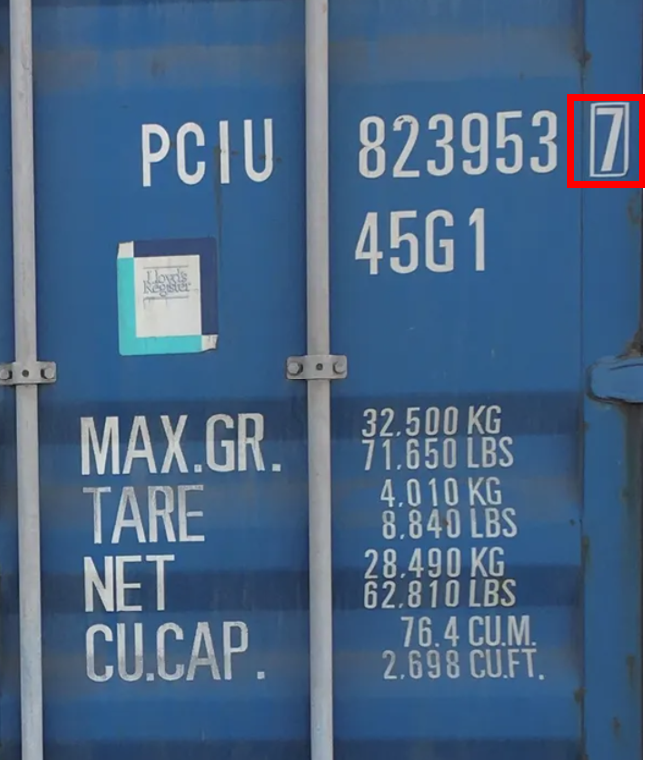
Assignment marking. It includes the following contents:
(1) Maximum Gross Weight, which refers to the sum of the weight of the container body and the maximum weight of the cargo that can be loaded. Expressed in kilograms (KG) and pounds (LBS) simultaneously.
(2) TARE Weight, which refers to the weight of the container body.
(3) NET Weight (marked as "PAYLOAD" by some shipping companies) refers to the net weight, which is the maximum weight that a container can hold goods.
(4) CU.CAP, The maximum internal volume, which is the maximum loading capacity that a container can withstand. Represented in cubic meters (CU. M.) and cubic feet (CU. FT.) simultaneously.
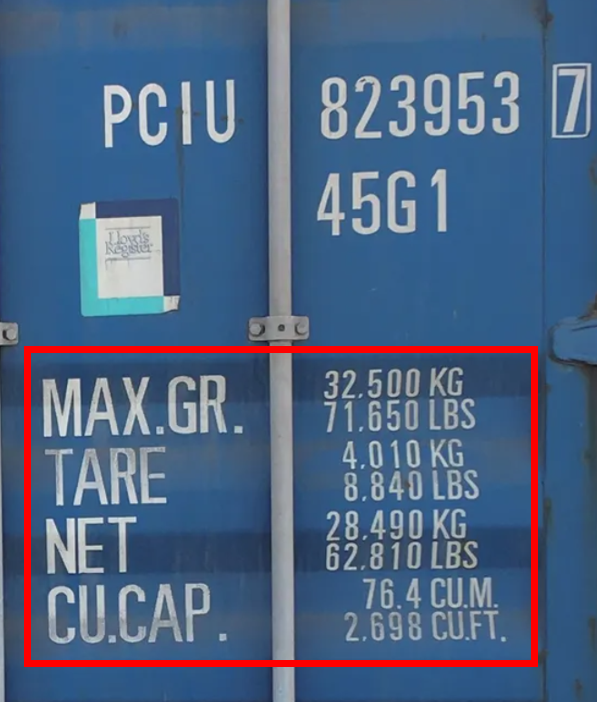
The weight of the boxed goods depends on the specific requirements on the box, so it is not generalized here.


